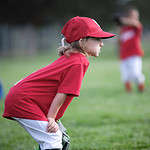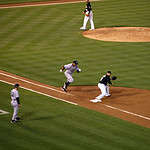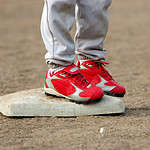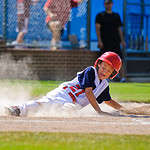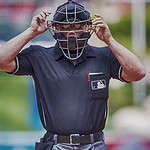Errors are a common occurrence in baseball and can have a significant impact on the outcome of a game. An error is a defensive misplay that allows a batter or runner to reach a base or advance further than they would have without the error. Errors can be made by any player on the field, including the pitcher, catcher, infielders, and outfielders.
There are several types of errors in baseball, including fielding errors, throwing errors, and mental errors. Fielding errors occur when a player fails to field a ball cleanly or mishandles a ball that is hit to them. Throwing errors occur when a player makes an inaccurate throw to another player, allowing the runner to reach a base or advance further. Mental errors occur when a player makes a mistake due to a lack of focus or poor decision-making, such as failing to cover a base or not backing up a teammate. Understanding the different types of errors and how they occur is essential for players and coaches to improve their performance and prevent costly mistakes on the field.

Definition of Errors in Baseball
In baseball, an error is a defensive play that is not executed successfully, resulting in a mistake that allows the opposing team to advance a base or reach a base they would not have otherwise. Errors are recorded by the official scorer and can be charged to any defensive player, including outfielders, infielders, catchers, and pitchers.
There are several types of errors that can occur during a game, including fielding errors, throwing errors, and misplayed balls. A fielding error is when a fielder fails to cleanly field a ball hit to them, while a throwing error is when a fielder makes an inaccurate throw to a base. A misplayed ball is when a fielder fails to make a play on a ball that they should have been able to catch or field cleanly.
Errors can affect other statistics, such as earned run average (ERA) and fielding percentage. An error can result in an unearned run, which is a run that is scored due to an error rather than a hit. This can negatively impact a pitcher’s ERA, as they will be charged with the run even though it was not their fault.
The official scorer is responsible for determining whether a play should be scored as an error or a hit. The scorer uses their judgment to determine whether a play was a routine play that should have been made with ordinary effort, or if it was a difficult play that required exceptional skill.
Overall, errors are an important statistic in baseball as they can have a significant impact on the outcome of a game. They are recorded on the scoreboard and in statistics such as fielding percentage and OPS, making them an important part of evaluating a player’s defensive abilities.
Types of Errors
When it comes to baseball, errors can happen in several ways. Here are the four main types of errors:
Fielding Errors
Fielding errors happen when a player fails to field a ball cleanly, allowing the batter to reach base. This can happen when a player misjudges the speed or direction of the ball, takes their eyes off the ball, or simply fails to make a clean catch.
Throwing Errors
Throwing errors happen when a player makes a poor or inaccurate throw, allowing the runner to advance or reach base. This can happen when a player rushes their throw, throws off-balance, or simply makes a bad throw.
Catching Errors
Catching errors happen when a player fails to catch a ball that they should have caught. This can happen when a player takes their eyes off the ball, misjudges the trajectory of the ball, or simply fails to make a clean catch.
Judgment Errors
Judgment errors happen when a player makes a poor decision on the field, leading to an error. This can happen when a player tries to make a play that they shouldn’t, fails to make a play that they should, or simply makes a bad decision.
In conclusion, errors are an inevitable part of baseball, and they can happen in several different ways. By understanding the different types of errors, players and fans alike can better appreciate the nuances of the game.

How Errors Affect the Game
Errors are a significant part of baseball, and they can have a considerable impact on the game’s outcome. An error occurs when a defensive player fails to make a play that a player of their skill level should make. Errors can happen in various ways, such as missing a catch, overthrowing a ball, or making a poor throw.
Errors can lead to runs being scored, which can change the game’s momentum and put the team at a disadvantage. For example, if a fielder makes an error and allows a runner to reach base, that runner can then score a run if the pitcher gives up a hit. The error will be recorded in the scorebook, and the run will be an unearned run, meaning it does not count towards the pitcher’s earned run average (ERA).
Errors can also affect a player’s statistics, such as their fielding percentage and assists. A fielding percentage is calculated by dividing the number of plays a player makes by the number of chances they have. If a player makes an error, it will lower their fielding percentage. Assists are also affected by errors, as a player cannot receive an assist if they make an error on the play.
In addition to affecting individual player statistics, errors can also impact a team’s offensive and defensive strategies. For example, if a team has a weak defensive player, the opposing team may try to steal bases or hit to that player’s position to take advantage of their weaknesses. On the other hand, a team with strong defensive players can use their skills to prevent runs from being scored and create opportunities for their offense.
Overall, errors are an essential aspect of baseball that can significantly impact the game’s outcome. While they can be frustrating for players and fans alike, they are also an opportunity for players to learn and improve their skills.
How Errors are Recorded and Tracked
Errors in baseball are recorded and tracked by the official scorer. The official scorer is responsible for making judgments on all plays that occur during a game, including errors. An error is charged to a fielder when he fails to make a play that an average fielder should make with ordinary effort.
Once an error is charged, it is recorded in the official scorebook and transmitted to the scoreboard and other statistical databases. The most common way an error is recorded is with the letter “E” followed by a number indicating the position of the fielder who committed the error. For example, an error by the third baseman would be recorded as “E5”.
Errors are an important statistic in baseball and are used to evaluate the defensive abilities of players and teams. They are also used to calculate other defensive statistics such as fielding percentage and ultimate zone rating (UZR).
In Major League Baseball (MLB), errors are tracked by the official scorer and reported to the league’s statistics provider, STATS. STATS then distributes the data to various media outlets and websites for use in game coverage and analysis.
It is important to note that errors are subjective and can vary depending on the official scorer’s judgment. Therefore, it is possible for a play to be ruled an error by one scorer and not by another. However, MLB has established guidelines for official scorers to follow in order to maintain consistency in the recording of errors.
Overall, errors are an important statistic in baseball that help evaluate defensive abilities and are recorded and tracked by the official scorer and various statistical databases such as STATS.
- UCLA Softball: Let’s Go Bruins! - February 12, 2024
- Youth Softball Helmet Buying Guide: Keep ‘Em Safe - February 12, 2024
- Youth Softball Pants: Our Top Picks for Your Top Player - February 12, 2024

